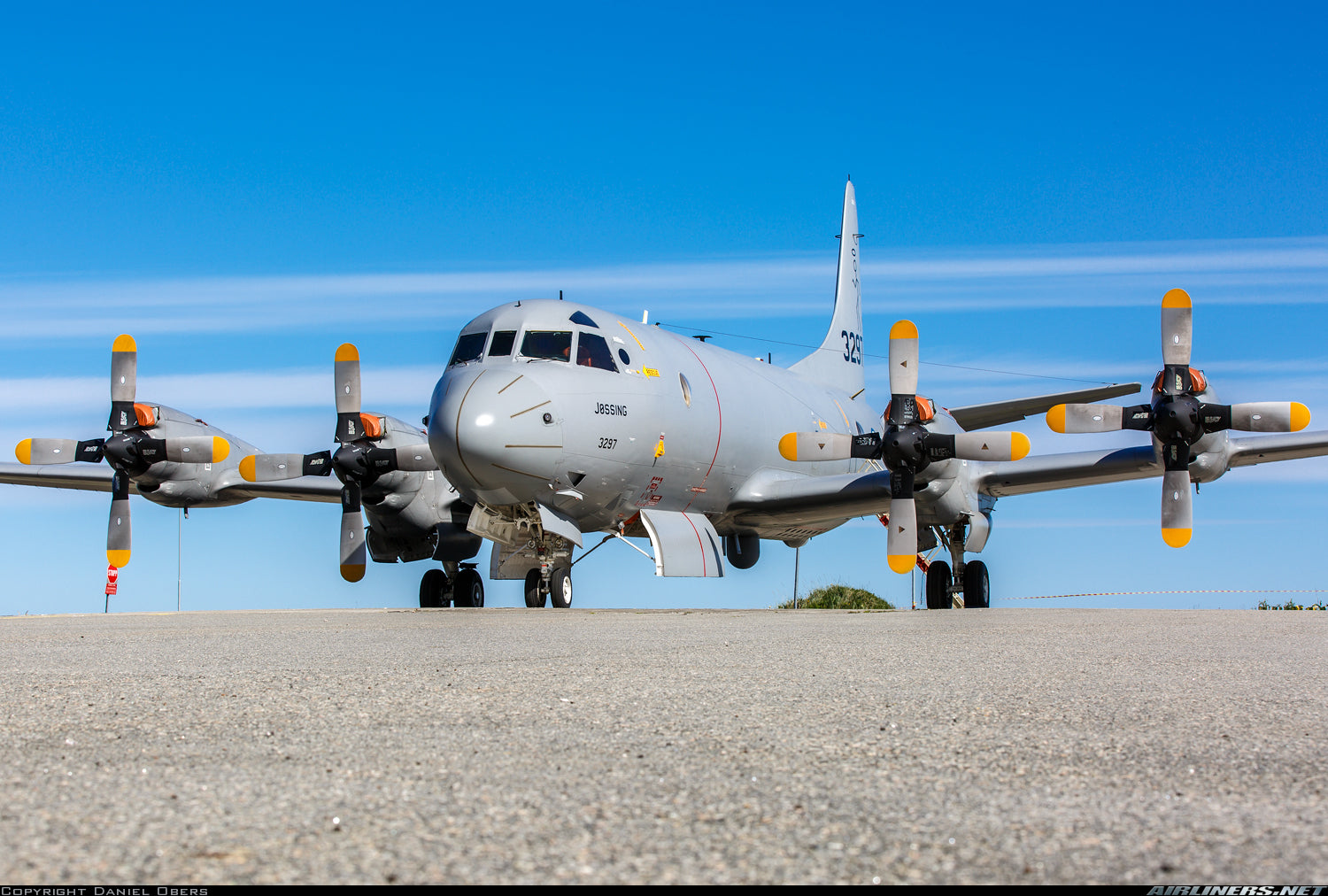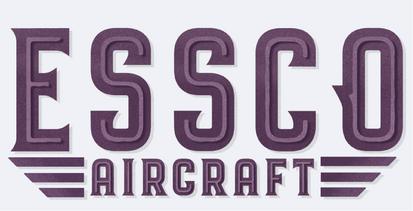
Number 49 of 100 in 100, the Lockheed P-3 Orion ✈️
Conceptualization:
The Lockheed P-3 Orion was introduced in the 1960s to meet the U.S. Navy’s growing need for a modern, long-range maritime patrol aircraft capable of anti-submarine warfare (ASW) during the Cold War. With Soviet submarines posing a significant threat, the P-3, based on the Lockheed L-188 Electra airliner, was designed to be fuel-efficient, capable of long patrols, and adaptable for reconnaissance and surveillance. Aviation trends at the time favored multi-role military aircraft, and the P-3 fit this need with advanced detection systems and weaponry to counter underwater threats.
Original Design:
The P-3 Orion’s original design featured four Allison T56-A-14 turboprop engines for extended range and endurance, a magnetic anomaly detector (MAD) in its distinctive tail boom for submarine detection, and an internal weapons bay for torpedoes, bombs, and mines. With a crew of 11, the aircraft’s mission systems included radar, sonar buoys, and electronic surveillance gear. The P-3's durability and fuel efficiency made it well-suited for long patrols over oceanic areas.

Photo Credit: airliners.net - CJ Moeser
Principal Designer:
The P-3 Orion was designed by Lockheed, drawing on the expertise of the team responsible for the L-188 Electra airliner. Led by engineers influenced by Kelly Johnson’s principles of durability and performance, the design team applied their knowledge from military aircraft such as the P2V Neptune. This experience helped shape the Orion into a versatile and reliable platform that evolved into a cornerstone of naval aviation.
Production Run:
Production of the Lockheed P-3 Orion began in 1961 and officially ended in 1990, with 757 units built. The bulk of production occurred during the 1960s and 1970s, with demand tapering off in the 1980s. Various upgrades and international orders, such as those from Japan and Canada, kept production lines open until the mid-1990s. Many P-3s continue to operate after undergoing life extension programs.
Evolution:
The P-3 Orion saw numerous upgrades throughout its service life, most notably the P-3C variant, which introduced advanced mission systems and sensor improvements. See more HERE. Other notable variants include the EP-3E Aries for electronic surveillance and the P-3 AEW&C for airborne early warning and control. With structural upgrades like the Service Life Extension Program (SLEP), the P-3 continued to evolve to meet modern military needs despite its aging airframe.

Photo Credit: airliners.net - Kevin Scott: Jetwash Images
Specifications:
Lockheed P-3C Orion Specifications
General characteristics
- Crew: 11
- Length: 116 ft 10 in (35.61 m)
- Wingspan: 99 ft 8 in (30.38 m)
- Height: 33 ft 8.5 in (10.274 m)
- Wing area: 1,300.0 sq ft (120.77 m2)
- Aspect ratio: 7.5
- Airfoil: root: NACA 0014 modified; tip: NACA 0012 modified
- Empty weight: 61,491 lb (27,892 kg)
- Zero-fuel weight: 77,200 lb (35,017 kg)
- Max takeoff weight: 135,000 lb (61,235 kg) MTOW normal
142,000 lb (64,410 kg) maximum permissible
- Maximum landing weight: (MLW) 103,880 lb (47,119 kg)
- Fuel capacity: 9,200 US gal (7,700 imp gal; 35,000 L) usable fuel in 5 wing and fuselage tanks ; (62,500 lb (28,350 kg) maximum fuel weight) ; 111 US gal (92 imp gal; 420 L) usable oil in 4 tanks
- Powerplant: 4 × Allison T56-A-14 turboprop engines, 4,910 shp (3,660 kW) each (equivalent)
- Propellers: 4-bladed Hamilton Standard 54H60-77, 13 ft 6 in (4.11 m) diameter constant-speed fully-feathering reversible propellers
Performance
- Maximum speed: 411 kn (473 mph, 761 km/h) at 15,000 ft (4,572 m) and 105,000 lb (47,627 kg)
- Cruise speed: 328 kn (377 mph, 607 km/h) at 25,000 ft (7,620 m) and 110,000 lb (49,895 kg)
- Patrol speed: 206 kn (237 mph; 382 km/h) at 1,500 ft (457 m) and 110,000 lb (49,895 kg)
- Stall speed: 133 kn (153 mph, 246 km/h) flaps up
112 kn (129 mph; 207 km/h) flaps down
- Combat range: 1,345 nmi (1,548 mi, 2,491 km) (3 hours on station at 1,500 ft (457 m))
- Ferry range: 4,830 nmi (5,560 mi, 8,950 km)
- Endurance: 17 hours 12 minutes at 15,000 ft (4,572 m) on two engines
12 hours 20 minutes at 15,000 ft (4,572 m) on four engines
- Service ceiling: 28,300 ft (8,600 m)
19,000 ft (5,791 m) one engine inoperative (OEI)
- Rate of climb: 1,950 ft/min (9.9 m/s)
- Time to altitude: 25,000 ft (7,620 m) in 30 minutes
- Wing loading: 103.8 lb/sq ft (507 kg/m2)
- Power/mass: 0.1455 hp/lb (0.2392 kW/kg) (equivalent)
- Take-off run: 4,240 ft (1,292 m)
- Take-off distance to 50 ft (15 m): 5,490 ft (1,673 m)
- Landing distance from 50 ft (15 m): 2,770 ft (844 m)
Comparison to Other Aircraft in its Class:
The Lockheed P-3 Orion, renowned for its endurance and loitering capability, has been a cornerstone of maritime patrol and anti-submarine warfare for over 60 years. While more modern aircraft like the Boeing P-8 Poseidon surpass the P-3 in speed (490 knots vs. 411 knots) and advanced sensor technology, the P-3 offers longer mission endurance (up to 16 hours in the P-3). The P-8 is propelled by CFM56-7B27A turbofan engines, whereas the P-3’s Allison T56-A-14 turboprops enable it to linger over target areas longer—a key feature for ASW missions. In comparison, Japan's Kawasaki P-1 has a top speed of 538 knots and more advanced avionics, though it has a slightly shorter range (4,300 nmi for the P-1 compared to the P-3's 4,830 nmi). Meanwhile, the S-3 Viking, a carrier-based ASW aircraft, is faster than the P-3 (429 knots) but lacks its long-range and mission versatility, making the P-3 more suitable for extended maritime patrols. Overall, the P-3 Orion’s flexibility and endurance have allowed it to remain a relevant and reliable platform, even as newer models like the P-8 Poseidon and P-1 offer advancements in speed and technology.
Performance:
V-Speeds:
- V_NE (Never Exceed Speed): 411 knots (473 mph)
- V_NO (Maximum Structural Cruising Speed): 328 knots (377 mph)
- V_FE (Maximum Flap Extended Speed):
- Flaps 10°: 255 knots
- Flaps 20°: 220 knots
- Flaps 30°: 190 knots
- Flaps 40°: 175 knots
- V_LE (Maximum Landing Gear Extended Speed): 300 knots
- V_LO (Maximum Landing Gear Operating Speed): 260 knots for extension, 220 knots for retraction
- V_S (Stall Speed, Clean Configuration): 128 knots
- V_A (Maneuvering Speed): Approximately 250 knots
G-Load Limitations:
- Positive G-Limits:
- Clean Configuration: +3.25g
- Flaps Extended: +2.0g
- Negative G-Limits:
- Clean Configuration: -1.0g
- Flaps Extended: -0.5g
Performance Assessment:
The P-3 is extensively used in maritime patrol and ASW training missions. Its stable low-speed performance and ability to loiter for long periods make it ideal for training crews on systems management, sensor operations, and coordination. Its handling characteristics allow it to operate in a range of conditions, but its complexity makes it impractical for civilian use. The P-3 Orion’s design is optimized for long, stable missions at low altitudes, making it perfect for military training but unsuitable for personal aviation.

Photo Credit: airliners.net - Steve Smith
Safety Record:
The P-3 Orion has maintained a solid safety record over its long operational history. Common safety concerns include issues related to aging airframes and engine fires. Notable incidents, like the 2001 collision with a Chinese fighter jet, have highlighted operational risks, though these are rare. Compared to similar aircraft like the Boeing P-8 Poseidon, the P-3’s safety is commendable, particularly considering its extensive service life.
Acquisition Cost:
The original acquisition cost of the P-3 Orion was around $5.4 million in the 1960s. Current costs for surplus P-3s vary, with Argentina recently purchasing four from Norway for $67 million, reflecting upgrades and extended service life. Although the P-3 remains more affordable than its modern replacement, the Boeing P-8 Poseidon, its value lies in its cost-effectiveness for maritime patrol.
Conclusion:
The Lockheed P-3 Orion has proven itself as one of the most versatile and enduring maritime patrol aircraft in aviation history. Originally developed to fulfill the U.S. Navy’s need for long-range anti-submarine warfare and reconnaissance, the P-3’s adaptability and advanced sensors have enabled it to perform a wide range of missions, including surveillance, search and rescue, and intelligence gathering. Over its service life, the aircraft has undergone numerous upgrades—ranging from structural enhancements to avionics updates—ensuring its continued relevance even in modern military operations.
Despite the challenges posed by operating aging airframes, the P-3 Orion’s safety record remains strong. Maintenance programs, such as the Service Life Extension Program (SLEP), have kept many of these aircraft in service well into the 21st century. With 757 units built, the P-3 remains a key asset for naval forces around the world, although newer aircraft like the Boeing P-8 Poseidon are gradually replacing it. Nevertheless, the P-3 Orion’s legacy as a premier maritime patrol aircraft is unmatched, continuing to play a vital role in coastal defense and international water surveillance. Its enduring presence cements its place as a cornerstone of naval aviation and a lasting example of engineering excellence in long-endurance missions.

Photo Credit: airliners.net - João Toste
Bibliography:
U.S. Navy Fact File – P-3 Orion
Aero Corner – Lockheed P-3 Orion
Wikipedia – Lockheed P-3 Orion
Current Event – Lockheed WP-3D Orion NOAA Hurricane Milton
Airliners.net - Lockheed P-3 Orion
Essco Links:
